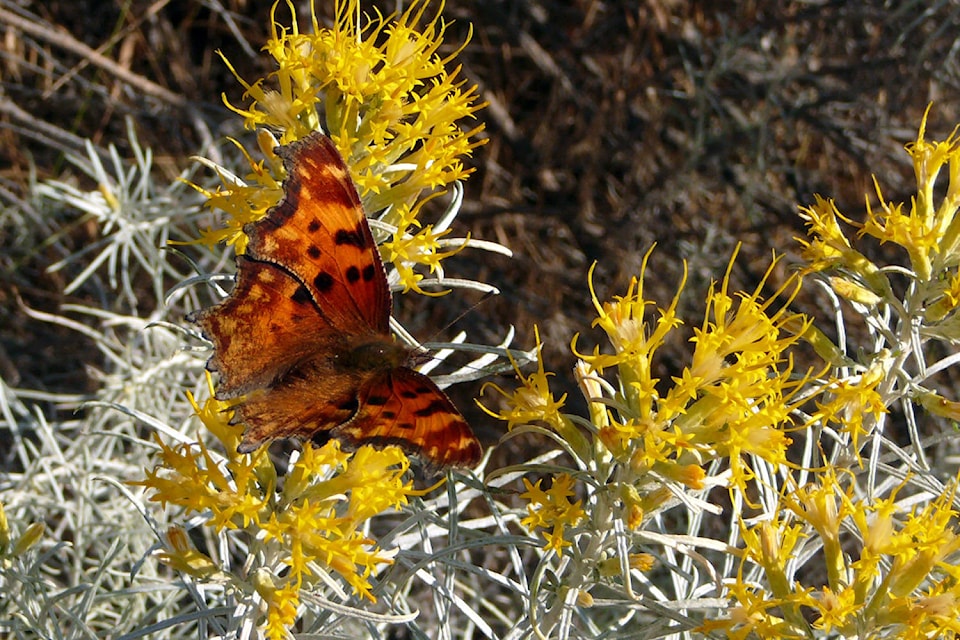Plants living in dry conditions have adapted in a variety of ways. Knowing some of these can help when looking for xeriscape plants.
Adaptations include root systems and foliage colour, size, or texture. Some plants have more than one adaptive feature.
Many of our native spring blooming wildflowers grow and bloom utilizing moisture in the soil from snow melt and spring rains.
Then they set seed, and go dormant, avoiding the summer’s dry heat.
Spring bulbs are another example.
They must be left for the foliage to die back naturally. As long as it’s green, the plant is storing energy in its bulb for next year’s flowers.
Grasses (such as fescues) that originate in dry regions, have very deep root systems, tapping into moisture deep in the soil.
Some grasses, such as the native blue bunch wheat grass covering our hillsides, go dormant in the heat of the summer and then green up again with fall rains and cooler temperatures.
German irises have a thick rhizome that stores moisture.
They withstand extremely dry conditions and bloom well in late spring in full sun.
When planting make sure the top of the rhizome is left exposed. If covered it may rot.
Oriental poppies and hollyhocks have taproots (a long, thick root) to draw moisture from deep in the soil and to store water.
The taproot makes them hard to transplant.
Silver foliage deflects the sun as seen with our native shrubs: big sagebrush and rabbitbrush.
Most of the Artemesia genus, such as A. ‘Silver Mound’ and A. ‘Silver Brocade’, plus the annual, dusty miller, are grown for their silver foliage, have insignificant flowers and thrive in dry conditions.
Silver foliage can light up a garden and enhance flower colour in adjacent plants.
Lavender has silver foliage plus the additional adaptation of needle-like leaves which reduce evaporation.
Pine, spruce and fir trees have needles with a waxy surface to conserve moisture.
Lambs ears have thick, grey, fuzzy leaves. Children love them.
The fuzzy surface helps deflect heat. They grow well in part shade.
Yuccas have thick leathery leaves to retain moisture. They also have thick taproots.
They look their best with no water and in full sun.
Our native Oregon grape has leathery leaves that undulate to deflect sunlight. Their edible berries, combined with crab apples, make a delicious jelly.
Sedums have fleshy leaves to hold moisture as do hens and chicks.
The latter are great for a children’s garden as they are tough, multiply readily and can be easily transplanted.
Check the plant database at for more xeriscape plants for the Okanagan.
Fall sessions of OXA’s popular ‘Introduction to Xeriscape’ workshop will be held September 23rd in �������� and Oct. 14 in Penticton. Details and registration information are on the OXA website.
There will be a free presentation Wednesday, Aug. 23 at 7 p.m. in the unH2O Xeriscape Garden, 4075 Gordon Drive, ��������.
Gwen Steele is executive-director of the non-profit Okanagan Xeriscape Association.



